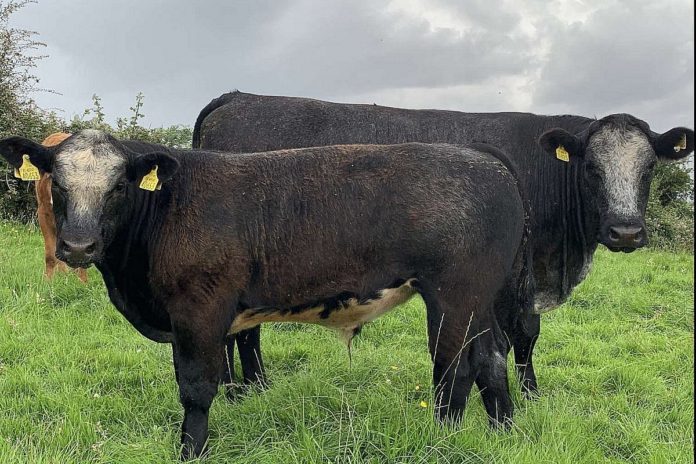That’s Farming editor, Catherina Cunnane, spoke to a farm vet ahead of calving 2023.
Across two separate articles, we share some of their tips based on their professional experience. As always, it is important to seek your own veterinary practitioner’s advice and expertise for individual cases.
This particular article focuses on when to intervene in a calving case, examining cows to identify calf size, positioning and possible complications, the importance of owning and maintaining a calving jack and coloured-coded calving ropes.
- Think safety: Ensure you have adequate facilities, and lighting, and always plan a quick escape route from calving pens, ect. Exercise caution and safety around cows – cow attacks at calving time have risen in recent years;
- Always wear washable protective clothing, boots and arm-length gloves: “Do not handle cows without calving gloves, as there is a risk of septicaemia and/or you could contract zoonotic diseases.”
- Timing: “Farmers are often unsure as to when they should intervene with calving cases, and in some cases, many do so earlier than they possibly should.”;
- Patience: “It is paramount to give cows adequate time to calve and know your limits -when you should intervene yourself or when you should call your vet”;
- Presentation and dilation: Read this article.
- Intervene if the calving is not progressing normally: “If after circa one hour after a cow passes a water bag or feet appear and the calf is not on the ground, safely examine the cow using a full-length calving glove with lubricating gel. In a lot of cases, cows will generally progress with calving herself if you give her adequate time and there are no complications. Remember that generally, heifers are going to take longer than cows. There are variations within calving case durations,”;
- Identifying complications: “A lack of progress may indicate that something is wrong, but handling a cow, as outlined above, is instrumental in identifying potential issues. For example, a uterine torsion, known as a twisted calf bed (clockwise or anti-clockwise) in layman’s terms, can be a possibility if a calving is not progressing, but it can be multi-factorial. When handling your cow, identify your calf positioning and size. When handling your cow, ensure you restrain them securely and that you do not put yourself in danger. If the calf is too big, if you suspect a twisted calf bed or positioned incorrectly (crossed feet: X means stop), and you cannot correct within a circa 10-minute period, call your vet.”
- Own a calving jack: “Every farmer, regardless of their system, breed type, or anticipated calving ease, should have a calving jack. There are various types (different heads and levers) and aluminium tube/pole lengths on the market.”
- Maintain your calving jack: “Keep your calving jack in good condition – oil and grease all moving mechanisms as required and wash and disinfect with Milton or liquid chloroxylenol after each calving – perform general maintenance as required and replace if necessary. Anything that comes in contact with animal bodily fluids should be disinfected, and your calving jack is no different.”
- The role of a calving jack: “It can be used as a calving aid to pull with contractions of cows or secondly as a lever, to exert downward pressure. An interesting point for your readers to note is that a calving jack, according to some studies, can exert the force of anything up to six people.” In a previous article, we highlighted 20 essential items for calving 2023, which you can read.
- Calving ropes: “Colour-coded ropes can be useful for identification purposes. With the common blue and red-coloured rope set, for example, I place blue on the left (L in blue and left) and the red on the right (R with R).” “It is important to know what leg is which, which you should identify when handling.”
Our second article focused on calf presentation, dilation, facilities, delivery methods and positioning calving ropes, which you can read.
Note: Always seek your vet’s advice.





